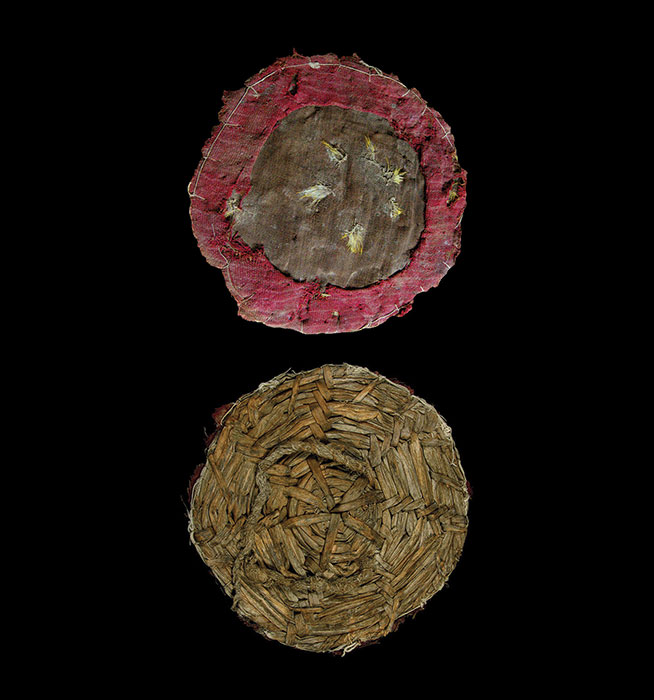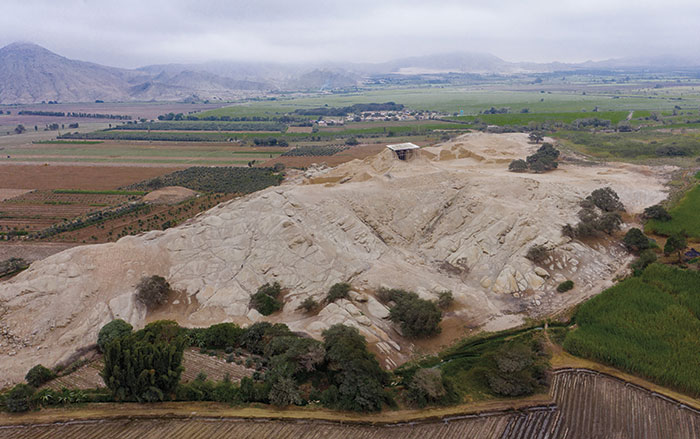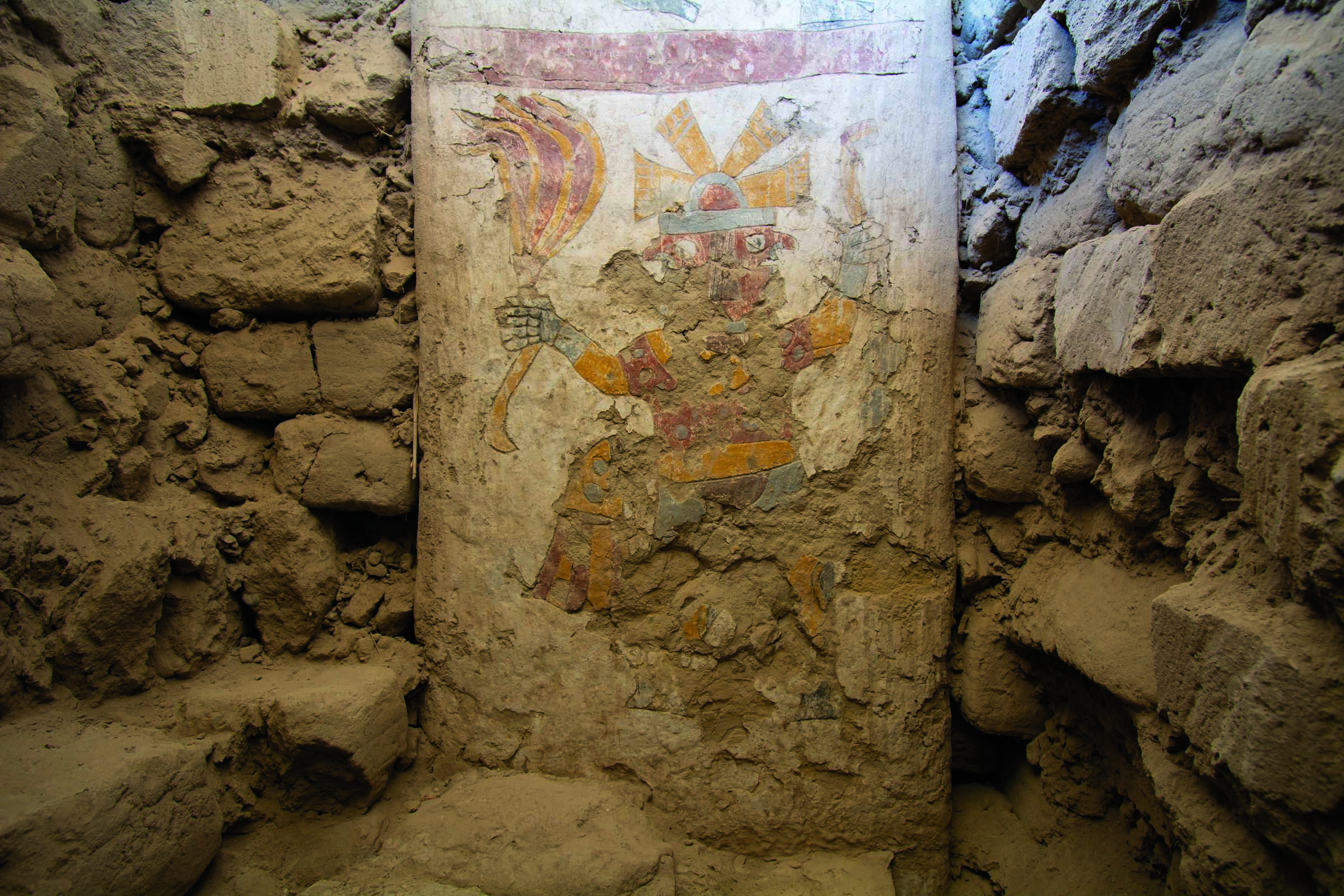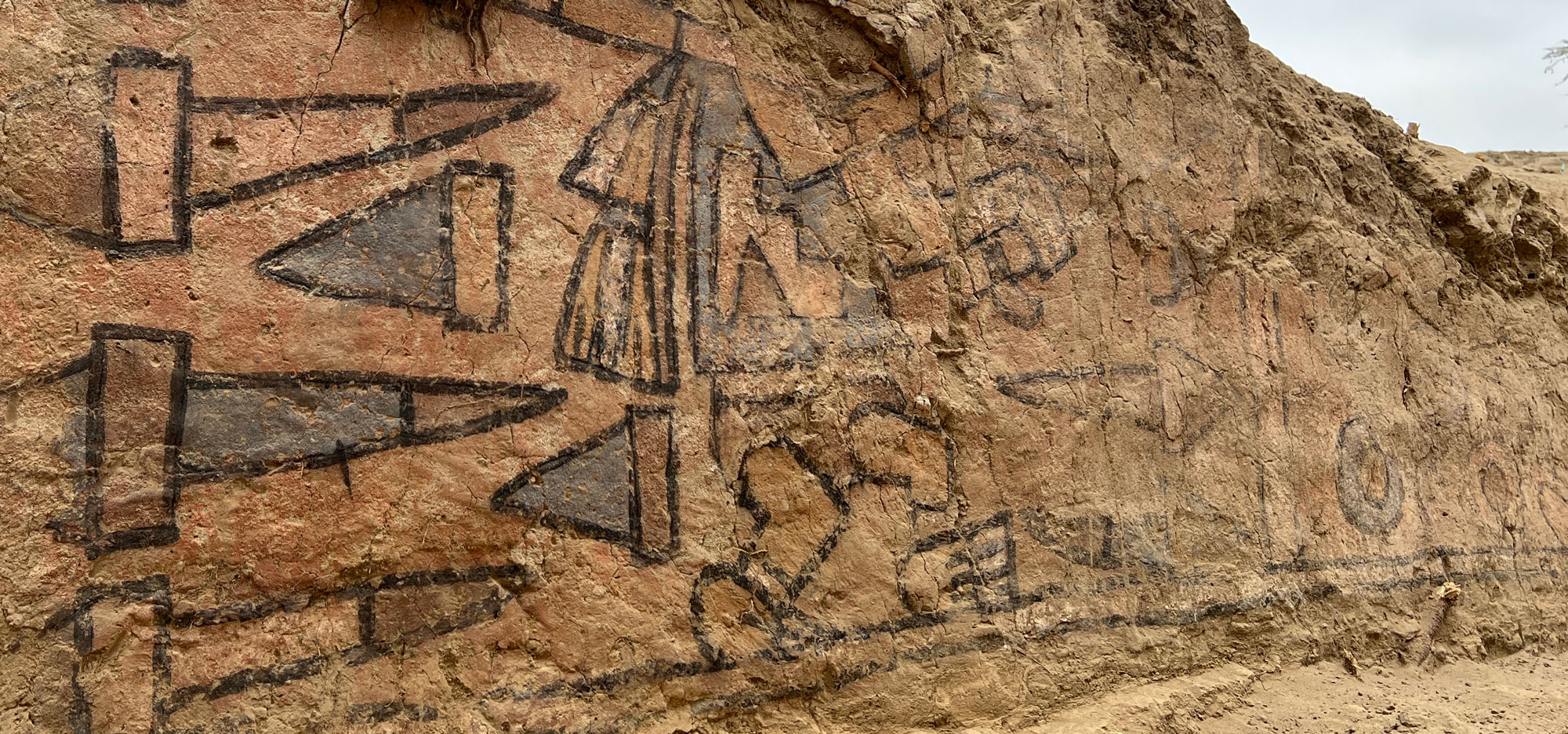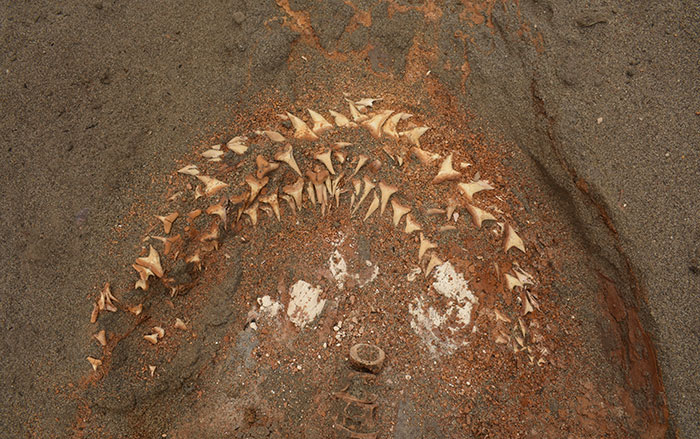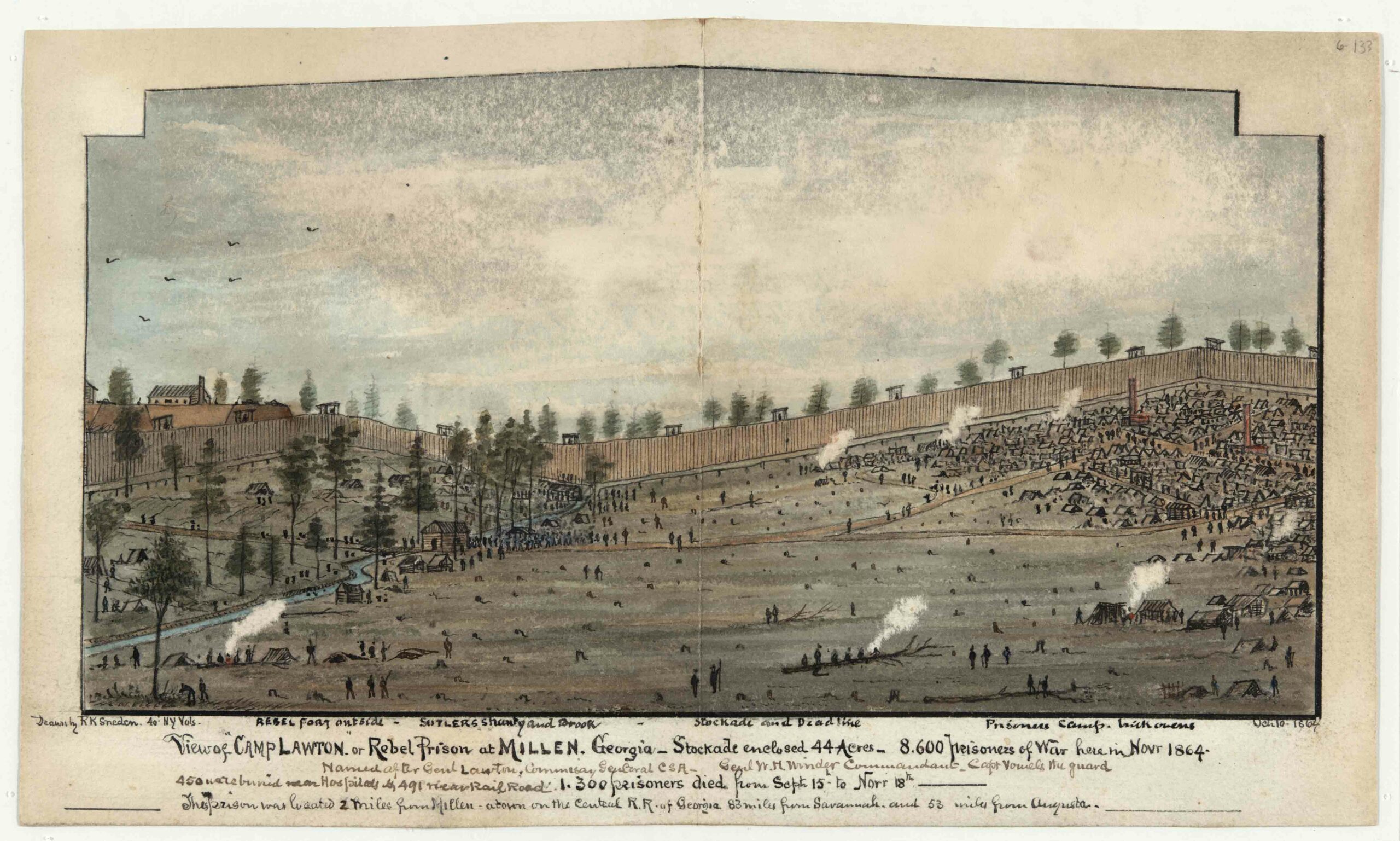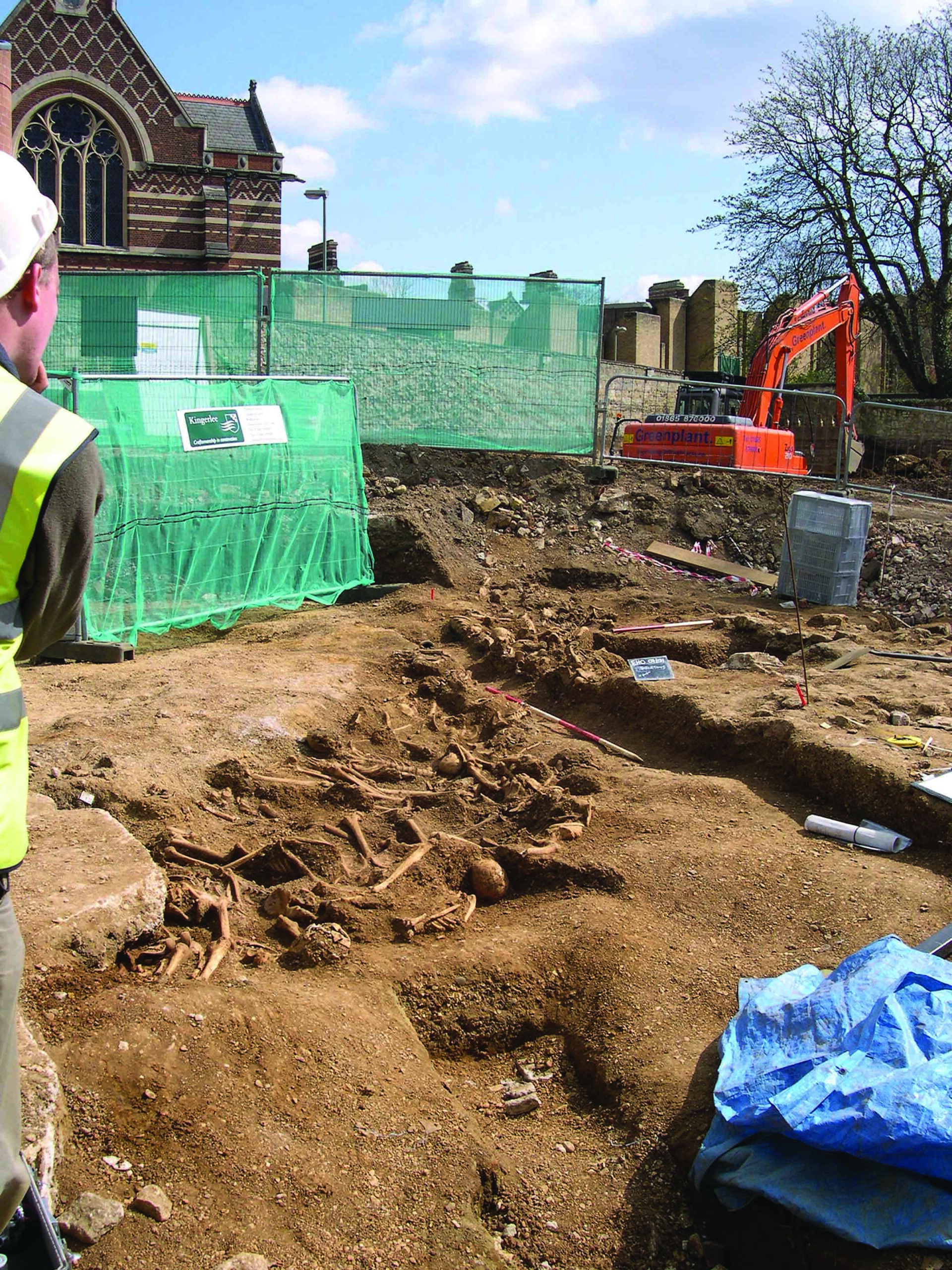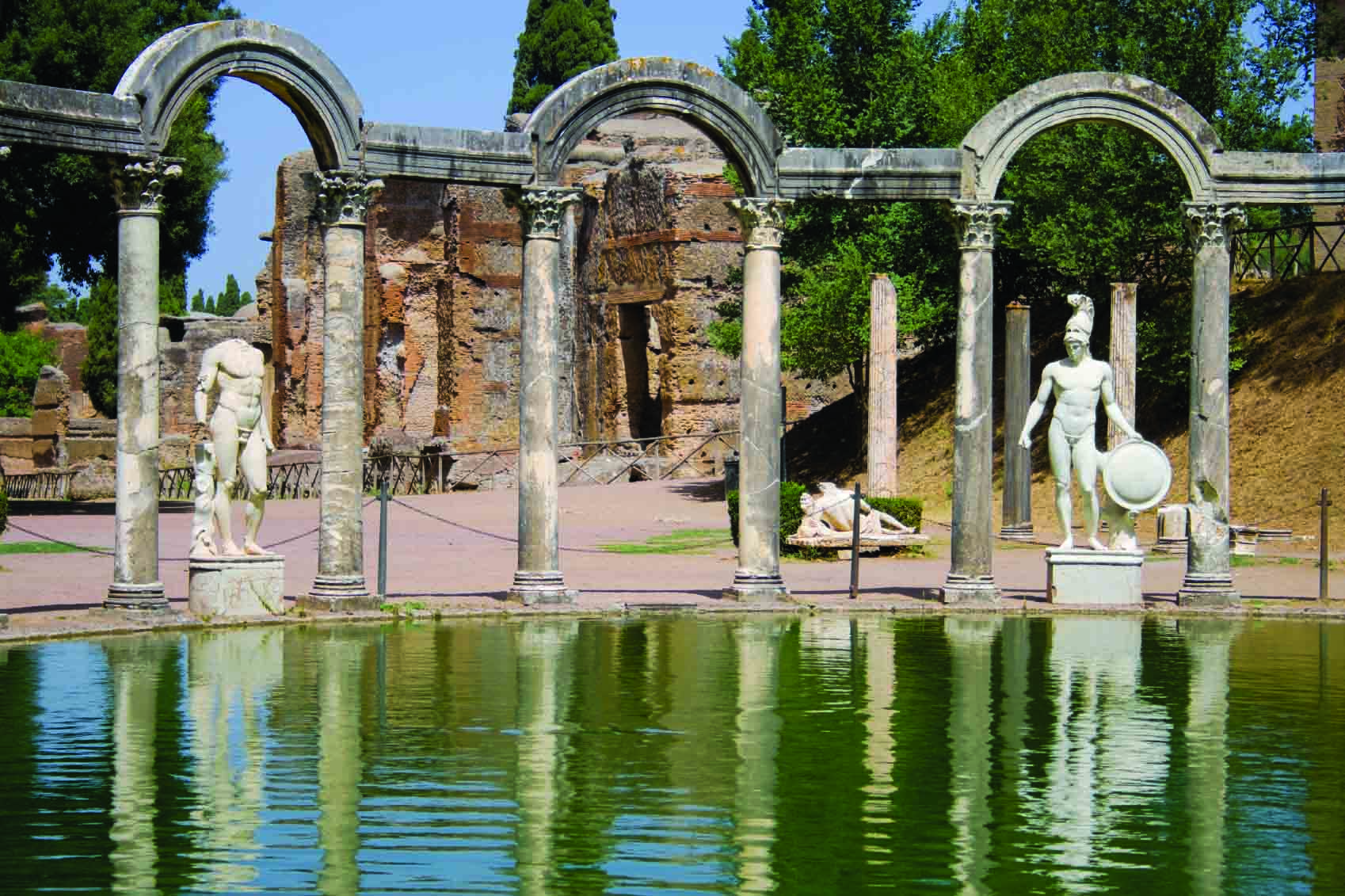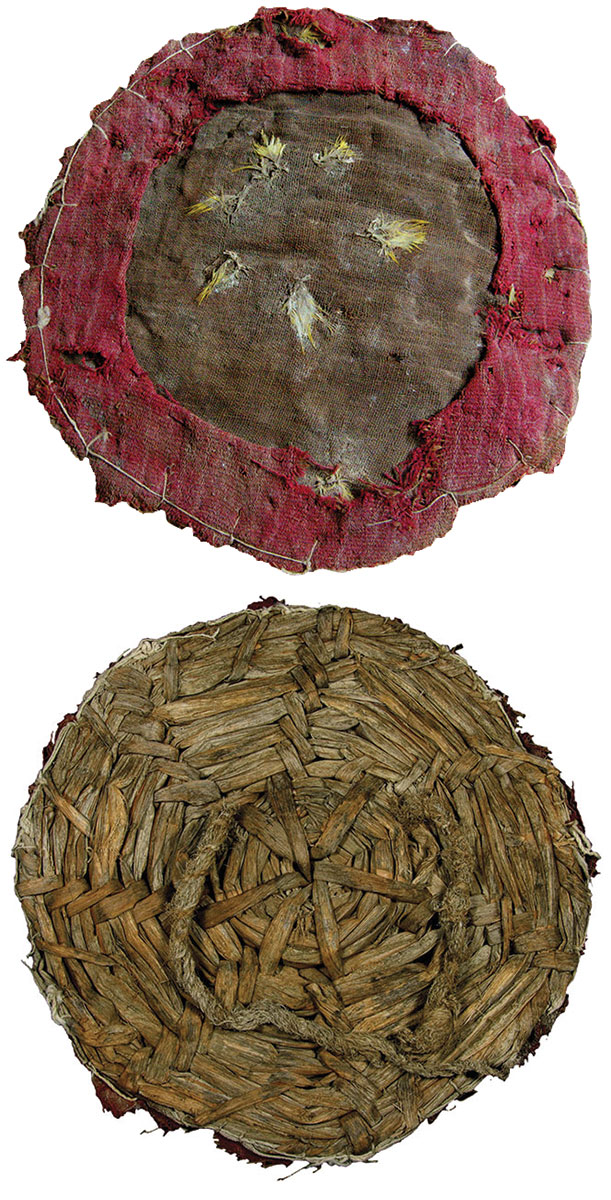
What is it?
Ceremonial Shield
Material
Reeds, cotton, wool, thread, and macaw feathers
Culture
Moche
Date
A.D. 600-850
Dimensions
9 inches in diameter
Found
Pañamarca, Nepeña Valley, Peru
Some time between the seventh and ninth centuries A.D., the Moche culture of Peru decided that one of the temples at the site of Pañamarca, a highly significant monumental center, needed to be replaced. Before they sealed up the building for good, they placed a brightly colored reed shield decorated with yellow feathers facedown in a small painted niche. For the Moche, who were fearsome warriors, shields would have been highly valued. Shields are one of the most commonly depicted images on both the ceramics and wall paintings the Moche are known for, yet there are very few surviving examples of actual shields.
However, this remarkable artifact shows no signs of ever having been used in combat. “The small size and delicate materials, including the unique use of feathers, as well as the lack of damage to the shield’s surface, suggest that it would have offered very little protection in battle,” says archaeologist Lisa Trever of the University of California, Berkeley, part of the team that discovered the shield. Instead, says Trever, the Pañamarca shield, the only one to have been found in a temple and not a tomb, transcended its function as a utilitarian object and became a powerful symbol of Moche ritual or devotional practice. “It’s possible that the Moche staged performances of combat where ceremonial weapons and shields like this would have been used,” Trever suggests. “It’s also possible that fancy shields like this were worn tied to the wrist by Moche warriors as a form of military regalia.”



